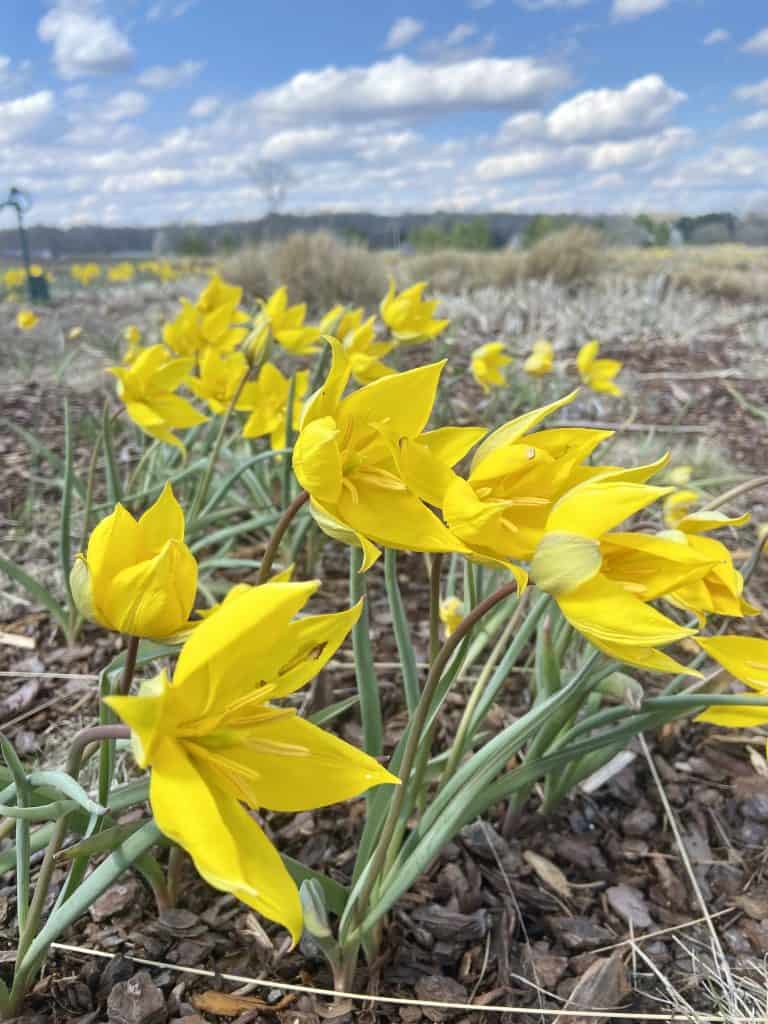Tulips are popular around the World, often known as the soul of Spring, and historically symbolic for perfect love. Finding the perfect Tulip for your location can often be challenging, particularly as many of Tulip cultivar’s are fussy and short-lived.
Tulips were found growing wild in Central Asia, and during the 16th century they were introduced to the Netherlands where fields of Tulips were planted. Tulip growers raised many new varieties and interesting varations, many appeared often due to mutations or harmless a virus.
During the 17th century the Tulip bulb market crashed and Tulip bulbs initially considered a collectable item, and often an expensive bulb suddendly consumer sales drop and the industry struggled to maintain value in a saturated marketplace.
Today thousands of Tulips are available in all shapes, with many naturalized in gardens across Europe, UK and USA. If you are looking for. Tulip bulb that will return each Spring and mulitply over the years, then source species tulips without the ‘Fancy Names’ as these will establish much easier, be less attractive to rodents and capable of naturalizing.
New to Tulips? Consider this easy guide to buying Spring bulbs as mistakes can be expensive, it Is easy to get mis-lead by the glossy Spring bulb magazines that land in your email by late Summer.
Tulipa sylvestris – A Designer Tulip for a Wild Flower Meadow in Spring.



A few hundred bulbs can be planted by hand, for thousands of bulbs you may need one of the following?
Species tulips are a perfect early Spring flowering bulb that when planted in a free-draining growing medium can thrive for many years, often multiplying on mass for a natural look.
I selected this Tulip based on recomendations and reviews and have not been disappointed be sure to do your research, it will save you time and money.
Spring bulbs are a new addition to the Piet Oudolf Meadow, thirty-three thousand species tulips were planted by our devoted volunteers in November 2021, these along with Crocus, grape hycainthus and scilla, have been puting on a spectacular show since early March.
Bio: A Very British Head Gardener – Journey Stateside
Stephen is the Director of Horticulture at the Delaware Botanic Gardens in Sussex county, Delaware.
Discover how Stephen’s career is blossoming at the Delaware Botanic Gardens.



Pingback: Planting Bulbs in Fall for Guaranteed Spring Joy